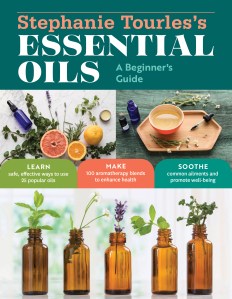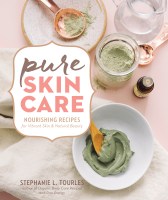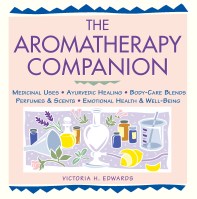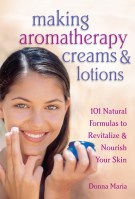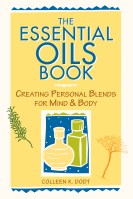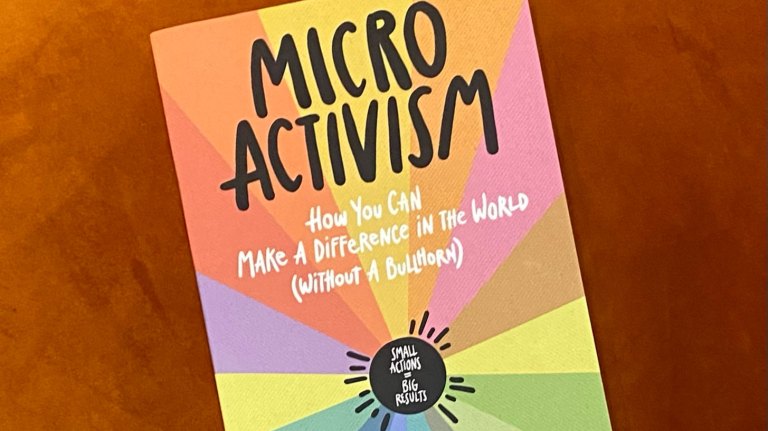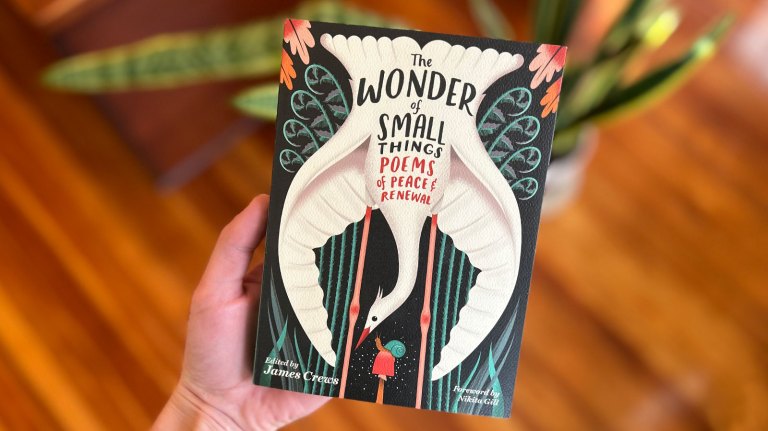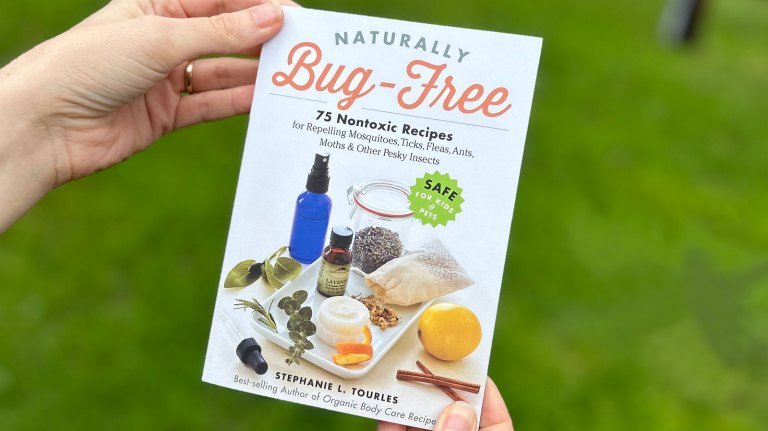Create an Essential Oils Travel Kit
When we travel, we take along more than our luggage. Author Stephanie Tourles recommends packing a portable kit of essential oils to fend off illness and treat what ails us when we’re on the road.
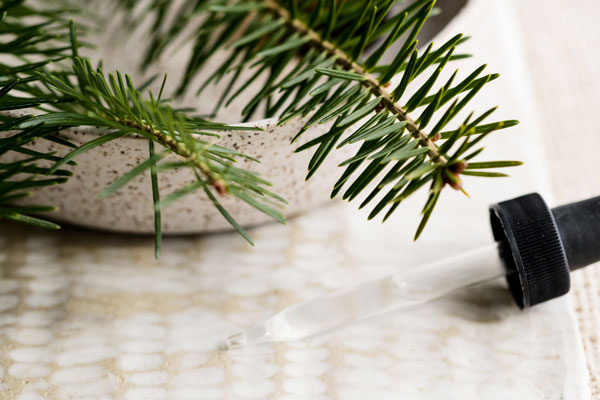
Illness and minor injuries don’t just happen when we’re at home. Bruises, headaches, cuts and scrapes, sore throats, stuffy noses, achy muscles, and feelings of anxiety or depression can occur just as easily when we’re on the road. It’s handy to have essential oils for everyday problems while you’re traveling, and it’s easy to create a road-ready essential oils care kit. I keep mine with me all the time and use it constantly, for emergencies and for everyday enjoyment.
What’s in my kit, you ask? A pair of tweezers; nail clippers; some cotton balls and cotton swabs; adhesive bandages; cleansing towelettes; a small bottle of mild liquid soap; a light carrier oil such as jojoba or fractionated coconut oil; and 5 mL bottles of my favorite multipurpose essential oils.
Here are the nine oils I keep on hand in my travel kit, and some of the ways they can be utilized:
Lavender (Lavandula angustifolia): Lavender lends aid and comfort for practically every ailment and condition. (See my article on the five most popular essential oils for more details on this oil’s amazing powers.) I use it for treating everything from sunburn and insect bites to muscle aches, cold and flu symptoms, anxiety and insomnia. Safety data: Generally considered nontoxic, nonirritating, and non-sensitizing. Adverse reactions to lavender essential oil are extremely rare, but people with extremely low blood pressure should avoid it.
Clove (Syzygium aromaticum, syn. Eugenia caryophyllata): I primarily harness this oil’s potent properties in blends to combat colds, flu, bronchitis, sinusitis, acne, nail fungus, and athlete’s foot. But when I’m on the road and get a toothache, clove is a fabulous remedy that works to allay pain. Simply mix 1 drop of clove essential oil and 2 drops of carrier oil with a cotton swab or your finger. Dab directly on the aching tooth and massage it into the surrounding gum area. Temporary numbness is expected, and normal. Repeat treatment up to three times per day for up to one week, as needed, until you can get to your dentist. Safety data: Clove essential oil is irritating to the skin and mucous membranes; may cause dermatitis. Repeated application with minimal dilution can result in extreme contact sensitization for some individuals. Avoid use if you are pregnant or breastfeeding, and use with great caution with children aged 2 to 5. Do not ingest clove essential oil if you are using anticoagulants, following major surgery, or if you suffer from peptic ulcer, hemophilia, or another bleeding disorder.
Fir, Balsam (Abies balsamea): Inhaling this oil from my palms or directly from the bottle lifts mental fog and infuses my brain with a balanced, happy energy like no other oil. It eases stress, relaxes muscle spasms, and works as a gentle, warming circulatory stimulant. An antiseptic respiratory decongestant and expectorant, it loosens mucus and lessens coughing. Safety data: Generally nontoxic, nonirritating, and non-sensitizing. Do not use with children under 2 years of age.
Eucalyptus (Eucalyptus globulus, E. radiata, E. smithii): One of nature’s most powerful antibiotics, this oil also fends off a wide range of fungi and viruses. I tend to prefer E. radiata, but all three types can be used to relieve symptoms of colds, flu, and respiratory and throat infections. Eucalyptus helps to thin mucus, so it’s wonderful in chest rubs. It’s also quite beneficial in healing wounds, easing achy or stiff muscles, and soothing arthritic joints. Safety data: Generally nontoxic, nonirritating (in dilution), and non-sensitizing. Avoid using E. globulus essential oil if you are pregnant or breastfeeding. (E. radiata and E. smithii are safe for pregnant and breastfeeding women and the best choices for seniors and anyone with sensitive skin.) Do not use any eucalyptus essential oils on or near the face of infants or children under 10. Eucalyptus essential oils are not compatible with homeopathic treatment.
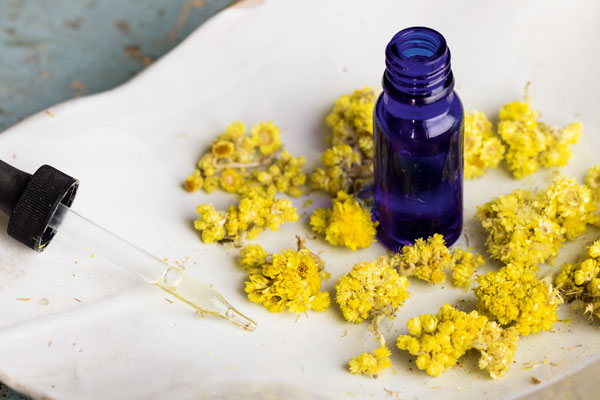
Helichrysum (Helichrysum italicum, syn. H. angustifolium): Extremely gentle but highly efficacious, this oil is a powerful wound healer and a superb anti-inflammatory. I especially like it in massage blends for its ability to ease pain and muscle spasms, including menstrual cramps. Safety data: Generally nontoxic, nonirritating, and non-sensitizing.
Orange, sweet (Citrus sinensis): Depending on the individual, orange essential oil can be either relaxing or gently energizing. For most children, it acts as an aromatically pleasing sedative for the nervous system, making it perfect for use with hyperactive kids or kids who need settling down at bedtime. Orange is wonderful in a massage blend for the feet or when simply inhaled. Safety data: Generally nontoxic, nonirritating, and generally non-sensitizing, with only a low risk of photosensitivity.
Peppermint (Mentha piperita): Peppermint opens respiratory channels. When combined with rosemary and eucalyptus essential oils, it is especially great in treating symptoms of sinus and lung congestion, improving oxygen uptake, thinning mucus, and combatting infection. Peppermint is a wonderfully effective remedy for many digestive ailments, whether topically applied in a belly rub blend or inhaled. It’s one of my favorite remedies for bad breath (1 drop on your tongue is all you need) and for indigestion, motion sickness, and nausea, it works like a charm. Safety data: Generally considered nontoxic and nonirritating (except in concentration); may cause sensitization in some individuals due to the menthol concentration. Use in moderation. Avoid if pregnant or breastfeeding. Use with caution on or near the face with very young children, as there is a low risk that it can irritate mucous membranes. Peppermint essential oil is not compatible with homeopathic treatment.
Rosemary (Rosmarinus officinalis ct. verbenon): Because it aids in lymphatic drainage, rosemary is of much benefit in relieving conditions of swelling, fatigue, and achiness in the lower legs and feet. Its warming, analgesic action makes this oil helpful in treatment of cold hands and feet as well as joint pain, especially in cases where symptoms worsen due to cold weather. Rosemary is strongly antibacterial with an affinity for the respiratory system, and a circulatory and cognitive stimulant. Safety data: R. officinalis ct. verbenon is the most gentle of the rosemary essential oils and is generally considered safe and nonirritating. Avoid all varieties of rosemary essential oil if you are pregnant. Avoid using R. officinalis ct. cineole and nonchemotype-specific R. officinalis on or near the face with children under the age of 10, as it may cause breathing difficulties.
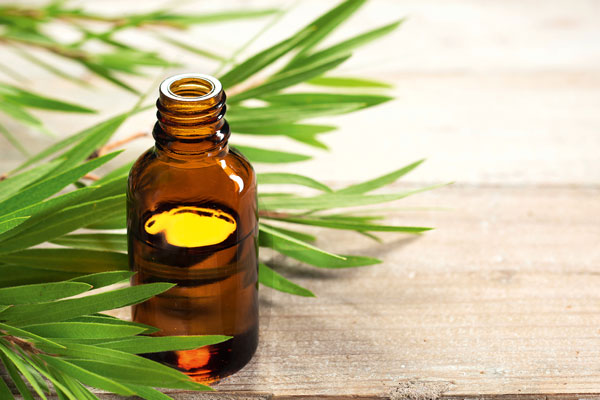
Tea tree (Melaleuca alternifolia): Tea tree essential oil is a potent, broad-spectrum antibacterial, antifungal, and antiviral that’s gentle on the skin and effective against a wide range of ailments, especially infections of the skin, respiratory tract, and mouth. Use it to deliver comfort and promote healing for conditions such as herpes lesions, acne, insect bites and stings, nail fungus, and more. Safety data: Nontoxic and generally nonirritating; potentially sensitizing in some individuals with delicate or thin skin.
Dilution Recommendations for Inhalation and Topical Use
Inhalant
For adults and children 12 years of age and older, place 1–2 drops of essential oil in your palm, add 1–2 drops of carrier oil, rub palms together, cup hands over nose and mouth, and inhale deeply through your nose (if your nose is congested, inhale through your mouth) for one minute or so, exhaling through the mouth. Be careful not to rub your eyes or nose afterward. Alternatively, you may take several deep breaths directly from the bottle, taking care not to get any oil in or on your nose.
For children aged 2 to 11, supervise during any inhalation process and wash their hands afterward, if you applied essential oils to their hands.
I do not recommend using essential oils for inhalation with infants and children under 2.
Skin Application
For adults and children 12 years of age and older, dilute 2 drops of essential oil with 1 teaspoon of carrier oil, cream, or salve, and massage into the affected area. For spot treatments, such as on small cuts, scrapes, or insect bites, you may use ¼ teaspoon of carrier product.
For children aged 6 to 11, reduce the quantity of essential oil to 1 drop.
For children aged 2 to 5, dilute 1 drop of essential oil in 1 teaspoon of carrier product.
For infants and children under 2, lavender and sweet orange are the only essential oils I would recommend from this list for topical application to the belly or feet. Dilute 6–8 drops per ½ cup of carrier oil, cream, or salve.
